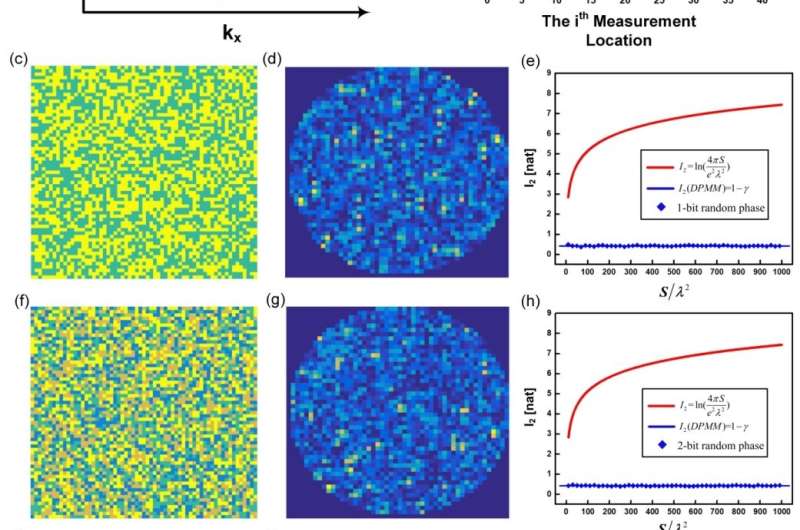Setting up fundamental bases for information metasurfaces

When illuminated by electromagnetic waves, subwavelength-scale particles of metasurfaces can couple the incident energy to free space with controllable amplitude, phase and polarizations, such that the transmitted wave can be manipulated flexibly with predesigned functionalities. In recent years, rapid developments of digital and information metasurfaces have stimulated many information processing applications, such as computational imaging, wireless communications, and performing mathematical operations. With the increasing amount of research focused on the topic of information processing with metasurfaces, a general theory to characterize the properties of metasurfaces from the information perspective is urgently needed.
Recently, Prof. Tie Jun Cui's group at Southeast University (SEU) has collaborated with Prof. Lianlin Li at Peking University (PKU), and reported a breakthrough on this topic in National Science Review entitled "Information theory of metasurfaces" (the first author is graduate student, Haotian Wu). In this work, a general information theory of metasurface is proposed to analyze the relation between the information of a metasurface and its far-field radiation pattern.
To analyze the metasurface from the information perspective, the scientists introduced a general aperture model to characterize the amplitude and phase responses of the metasurface. By incorporating the general aperture model of the metasurface with uncertainty relation in L2-space, the scientists found an upper bound of information contained in the radiation pattern of a metasurface, and revealed the theoretical upper limit of orthogonal radiation states that can be realized by the metasurface. The proposed theory also provides guidance for inverse design of metasurface with respect to given functionalities. That is to say, once the required radiation pattern(s) is/are specified, the size of metasurface must be larger than the value predicted by the proposed theory, otherwise it would be impossible to realize the required radiation pattern(s) no matter what design strategies are adopted. In addition, through investigating the information of disordered-phase modulated metasurfaces, the scientists found the information invariance (1-γ) of chaotic radiation patterns generated by disordered metasurfaces. The result indicates that the far-field information of the disordered-phase modulated radiation patterns is always equal to 1-γ (γ is Euler's constant), which is independent of the size of the metasurface, the number of metasurface elements, and the phase patterns.
To verify the proposed theory, the scientists first analyzed the information of far-field radiation patterns generated by multiple sets of metasurface samples with different amplitude and phase modulations. The calculated results are all bounded by the inequality provided by the proposed theory. Additionally, to verify the information invariance of disordered metasurfaces, they calculated the information of far-field patterns generated by multiple sets of disordered phase-modulated metasurface samples: 1-bit digital coding phases with each phase taking on one of the values of 0 and π randomly; 2-bit digital coding phases with each phase taking on one of the values of 0, π/2, π, and 3/2π randomly, and continuous random phase variable described by a uniform probability distribution. The calculated results of the speckle-like radiation patterns match the theoretical prediction (1-γ) perfectly, which convincingly demonstrate the information invariance of the chaotic far-field patterns.
"The presented theory establishes a quantitative framework to characterize the information processing capabilities of metasurfaces, which provides deeper physical insights in understanding metasurface from information perspective, and offers new approaches to facilitate analyses and designs of metasurfaces. The findings of this investigation are generally applicable in a wide range of spectra, which would be helpful to lay the groundwork for future researches into the regime of information metasurfaces," the scientists forecast.
More information: Haotian Wu et al, Information Theory of Metasurfaces, National Science Review (2019). DOI: 10.1093/nsr/nwz195
Provided by Science China Press





















